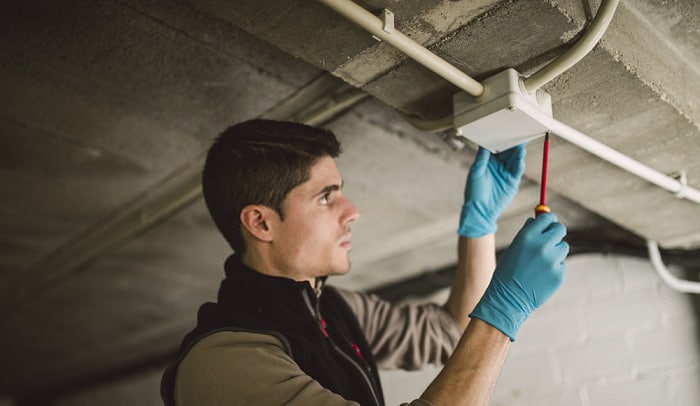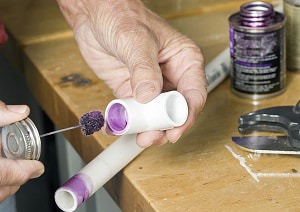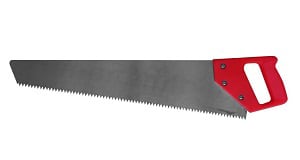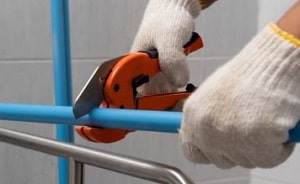
Did you install electrical boxes for a new set of series circuits? It is mandatory to keep house wires safe with PVC electrical conduit connected to an electrical box; this type of enclosure is necessary to protect wire splices.
In addition, you as the homeowner must comply with the National Electrical Code (NEC) Rules and Regulations, so it is best to learn how to connect PVC conduit to an electrical box.
Cut the pipe, apply PVC cement, and insert it into the electrical box; It’s that easy. But always remember to let your electrician inspect your work afterwards.

What you’ll need

Before beginning this project, you will need to prepare a few essential items. First of all, you will be working with electricity, so make sure you have the proper PPE, such as insulated gloves and boots. Then, proceed to get these materials.
1. Gray PVC Conduit/Electrical
This type of conduit is best for handling electricity due to its ability to withstand harsh weather conditions , especially extreme heat. There are different colors of PVC/CPVC conduit for industrial use.
There is white for plumbing and black for hot water management. Keep in mind, however, that gray PVC pipe is specifically for electrical wiring and the most heat resistant of the three.
There are two types of gray PVC conduit, Schedule 40 and Schedule 80. Schedule 40 PVC has a larger diameter than Schedule 80 to pull wires more easily, but its jacket is thinner. Schedule 80 PVC, on the other hand, is thicker for more wiring protection, but has a smaller interior footprint.
Either works great for electrical use, although the Schedule 80 is best for outdoor junction box installation. and areas where people frequent. On the other hand, Program 40 is better for remote areas. Therefore, it is best to have both if you plan to install a large amount of electrical conduit in the house.
2. Conduit Fittings
Like PVC pipe, conduit fittings are necessary to ensure that wiring is safe from elements such as dirt and moisture. You can use them as a conduit-to-conduit or conduit-to-box connector. There are a variety of sizes and shapes for different piping situations or personal preferences.
There are nine types of fittings. Each accessory has its own purpose, but metal locknuts and plastic glands are sufficient to connect PVC conduit to electrical boxes with built-in connectors.
3. Threaded Connectors
Suppose your metal electrical boxes do not have threaded connectors available from the factory. In that case, you’ll need to accompany them with pairs of threaded hubs to fix your PVC conduits into the holes in the box. This tool will serve as a sealant between the two connections.
You can use metal, plastic, or mixed sockets, as long as the plastic doesn’t crack and the locknuts and glands hold everything in place. Also, double check the diameter of your PVC to see if it will fit snugly into your connector’s groove. Otherwise, the PVC cement would be useless and dirt/water particles could still get inside.
4. PVC Cement

The purpose of this solution is to securely connect plastic electrical conduit to fixtures. It’s available as a bottle with a cap and applicator sponge attached, and with just a small amount rubbed in, it provides immediate watertight, airtight security.
You can buy the typical type: a small can to apply to ductwork less than three inches in diameter. If your pipe is larger, buy a larger can with a larger applicator pad. Avoid universal solvent cement types as well; just get the can of glue designed specifically for PVC.
5. Coarse-grit sandpaper
Coarse-grit sandpaper is the best I can recommend for deburring the edges of a cut PVC conduit. You’ll need this to smooth out any rough patches that can damage your cables in the long run.
But if you don’t have sandpaper available, you can always use a sharp knife or cutter to remove the serrations. areas.
6.Hand Saw/Hacksaw

PVC conduit is not that difficult to cut. You can do this with minimal effort using a hand saw or small blade and it will work just fine.
However, if you want to work faster and with fewer ruts after cutting, a hacksaw or hacksaw circular can smooth the surface quickly. Either way, both can do it. It’s a matter of personal preference, but the latter option is preferable if you have a deadline.
Steps to connect conduit to electrical box

With all the items you gathered at the hardware store, get set up and get to work with this PVC electrical conduit installation guide.
Step 1. Power off

First, the number one safety protocol before working on electrical maintenance is to turn off the main breaker. With this step, you can move freely in your workspace without risking touching a live wire. Later, you’ll need all your strength to pull the wires out of a narrow conduit, so running out of power is the safest and most efficient way to do it.
Step 2. Cut the conduit

As you cut the tubes, make sure they match the corners and route of your wiring system. The edges should fit through the fittings when connecting the PVC conduit to the metal box.
To do this accurately, you can mark a straight line where you are supposed to cut it and then use a clamp to hold the PVC. while you cut it. However, if you’re in a hurry, you can try simpler methods, such as using a PVC cutter.
Step 3. Smooth It Out
Now Of course, a Freshly cut PVC will always have rough edges of plastic hanging inside or outside of the pipe. Always deburr the ends of your PVC with the help of coarse sandpaper or a utility knife. These plastic patches can be sharp to the touch at times, and with that, they can damage wiring insulations if you ignore them.
Step 4. Install accessories
If your electrical box has a built-in accessory, you can skip this part. Otherwise, before connecting the conduit to the junction box, prepare the threaded hubs, glands, and locknuts first. Insert the proper size PVC connection into the hole in the box and use the locknut and bushing to keep it watertight. After this you can glue them.
Step 5. Apply the PVC cement

In First of all, your electrical PVC does not need a primer. Your hardware store has glue or cement specifically for a conduit-to-fitting connection. When performing this procedure, wear a glove while applying a small dollop of cement to the end of the pipe. Do the same step inside the electrical box fitting, but don’t try to overfill it.
Never try to dry fit your PVCs and fitting for measuring purposes. It doesn’t work like a Lego or a puzzle that you can slide in and out with no problem. Always spread PVC cement first.
Step 6. Connect the pipe and box

Once you’re all set, connect your electrical conduit exterior inside the box fittings. Remember to install one box at a time and never do several at the same time, or you will have trouble installing all the conduits. The trick is to connect the PVCs in one box at a time while running conduit.
Step 7. Route the wires
Wait 15 minutes to dry the glue and a few hours to cure, depending on the temperature, when installing PVC conduit outside the house. Then run the wires through the pipes going to the junction box. You can use fish tape or what they call an electrician’s snake to feed the wire through the conduit.
Conclusion
So that’s it! Remember that the most crucial part of learning how to connect PVC conduit to an electrical box is deburring any rough edges after cutting the pipe. Many people forget to do this part, and once they put the tube inside the fittings, there is still sharp plastic left over that can eventually damage the circuitry.
Did this tutorial work well for your PVC installation? In the comment section below, you can say what I missed or share it with your friends if you find it useful.
.
